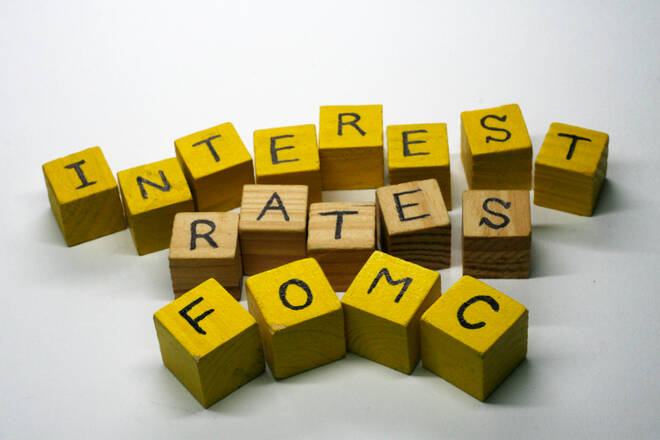Advertisement
Advertisement
Why Fed May Pass on July Rate Cut
By:
Given Powell’s comments, it looks as if the game-changer could be Friday’s U.S. Non-Farm Payrolls report. If this report comes in better than expected then combined with the resumption of trade talks and the steady PMI data, I think investors will have to seriously consider the possibility of no rate cut in July.
U.S. Treasury yields jumped on Monday after U.S. President Donald Trump and Chinese President Xi Jinping agreed over the weekend to resume trade negotiations. The news encouraged long investors to book profits from a surge in Treasury notes and bonds that began in early May when the two economic powerhouses called off trade talks.
This was the second potential blow to Treasury investors in less than a week. Last week, dovish comments from Federal Reserve Chairman Jerome Powell and St. Louis Fed President James Bullard dampened calls for a 50 basis point rate cut at the end of July. Powell failed to acknowledge that a rate cut was necessary, while Bullard implied that a half-point cut would be overdoing it.
The yield on the benchmark 10-year Treasury note was higher at around 2.0117%, while the yield on the 30-year Treasury bond was also higher at 2.5364%.
Fed May Hold Rates Steady at July Meeting
Even though the financial markets aren’t showing it, I don’t think it’s too early to consider that Federal Reserve policymakers may decide to hold rates steady at its July 30-31 meeting. It all boils down to whether they feel the need for “insurance” against the start of an economic slowdown.
Last week, while the markets were pricing in four quarter-point rate cuts by April 2020, Powell reiterated his remarks from the June 18-19 Federal Open Market Committee (FOMC) meeting, emphasizing that policy is under review though he did not overtly tip his hand that a rate cut was in the works.
“Since the beginning of the year, we had been taking a patient stance toward assessing the need for any policy change,” Powell said. “We now state that the Committee will closely monitor the implications of incoming information for the economic outlook and will act as appropriate to sustain the expansion, with a strong labor market and inflation near its symmetric 2 percent objective.”
He also stated, “What happened is things have changed since May 1, significantly,” he said. “The global risk picture has changed.”
At its June 18-19 meeting, the FOMC voted 9 to 1 to leave rates unchanged. And what has changed since then?
The U.S. and China resumed trade talks and U.S. Manufacturing fell less than forecast.
According to the ISM Manufacturing report, economic activity in the manufacturing sector expanded in June, and the overall economy grew for the 122nd consecutive month. Furthermore, “Comments from the panel reflect continued expanding business strength, but at soft levels.”
Keep This in Mind
Given Powell’s comments, it looks as if the game-changer could be Friday’s U.S. Non-Farm Payrolls report. If this report comes in better than expected then combined with the resumption of trade talks and the steady PMI data, I think investors will have to seriously consider the possibility of no rate cut in July.
We’ll know what the markets are thinking by watching Treasury yields. It’s not too early to develop a strategy to capture the most from this potential shift in investor sentiment. For one, yields will likely spike higher as well as the U.S. Dollar. Gold prices will plunge and stocks could erase some of the premium built into the market in anticipation of a rate cut.
It all comes down to the need for insurance against a slowdown in the expansion.
About the Author
James Hyerczykauthor
James Hyerczyk is a U.S. based seasoned technical analyst and educator with over 40 years of experience in market analysis and trading, specializing in chart patterns and price movement. He is the author of two books on technical analysis and has a background in both futures and stock markets.
Latest news and analysis
Advertisement
